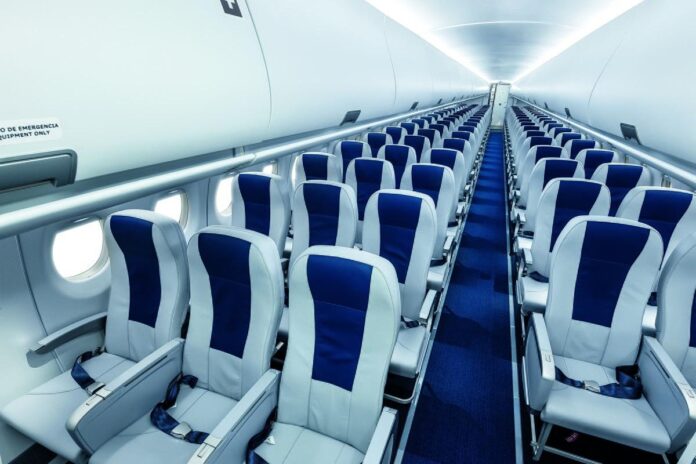The evolution of aircraft design goes beyond engineering marvels; it extends to prioritizing the comfort and well-being of passengers. Human-centered aircraft design embodies the fusion of ergonomics and technology, aiming to create a seamless and pleasant flying experience for passengers. From seat ergonomics to cabin ambiance, every aspect is meticulously crafted to enhance comfort and convenience.
At the core of human-centered aircraft design lies ergonomics—an interdisciplinary field focused on optimizing the interaction between humans and the systems they use. In aviation, ergonomics plays a pivotal role in designing aircraft interiors that cater to the physiological and psychological needs of passengers. Comfortable seating, accessible amenities, and intuitive interfaces are key elements considered in this process.
Seating arrangements and design significantly impact passenger comfort during flights. Ergonomically designed seats consider factors such as posture support, cushioning, and adjustable features to accommodate a diverse range of body types and preferences. These seats are meticulously engineered to minimize fatigue and discomfort during long-haul flights, offering lumbar support and customizable settings to enhance passenger well-being.
Cabin layout and space utilization are equally crucial in human-centered aircraft design. Optimizing cabin space involves thoughtful placement of seats, aisles, and amenities to ensure efficient movement and accessibility for passengers and crew. Innovations in design allow for the creation of spacious cabins that provide a sense of openness, despite the confined space of an aircraft.
Lighting and ambiance contribute significantly to the overall passenger experience. Natural lighting simulations, mood lighting, and color schemes are strategically employed to create a calming and inviting atmosphere within the cabin. These elements not only enhance comfort but also help in mitigating jet lag and reducing passenger stress during the flight.
In-flight entertainment and connectivity systems are integral components of modern aircraft design aimed at enhancing passenger experience. Ergonomically positioned screens, intuitive controls, and diverse entertainment options cater to the preferences of passengers, ensuring a pleasant and engaging journey. Moreover, seamless connectivity allows passengers to stay connected throughout the flight, enhancing convenience and productivity.
Temperature and air quality management are essential for passenger comfort. Human-centered aircraft design incorporates advanced ventilation systems and temperature control mechanisms to maintain a comfortable cabin environment. These systems regulate airflow, humidity levels, and air quality, ensuring a pleasant atmosphere conducive to relaxation and well-being.
Accessibility is a paramount consideration in human-centered aircraft design. Ensuring that the cabin is easily accessible to passengers with reduced mobility or special needs is fundamental. Features such as wider aisles, accessible lavatories, and designated spaces for wheelchairs or assistive devices demonstrate a commitment to inclusivity in aviation design.
The integration of technology further elevates the passenger experience. Innovations such as noise-canceling technologies, adjustable headrests, and smart controls enhance comfort by minimizing disturbances and allowing passengers to personalize their environment. Additionally, advancements in materials science lead to lighter, more durable materials that contribute to overall comfort and efficiency.
Health and wellness considerations are gaining prominence in aircraft design. Features like ergonomic seating, adjustable lighting, and cabin air quality enhancements aim to reduce the physical strain of flying and mitigate the effects of jet lag, ultimately prioritizing passenger well-being throughout the journey.
The future of human-centered aircraft design holds promise for even more innovative solutions. Advancements in virtual reality, personalized experiences, and bio-inspired design concepts present opportunities to redefine the flying experience. With a continued focus on ergonomics and passenger-centric design, the aviation industry is poised to deliver even higher standards of comfort and convenience for travelers worldwide.
























